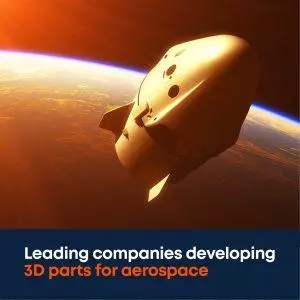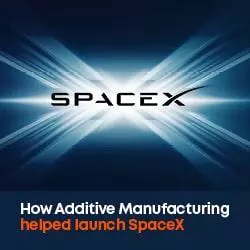
Applications Of Additive Manufacturing In Aerospace
In recent years, additive manufacturing (AM) has been in development i...

How additive manufacturing helped launch SpaceX
SpaceX is by far the most exciting company of the 21st century. No oth...
Additive metal manufacturing consists of a wide range of technologies and techniques. One of the most mature technologies is powder bed fusion (PBF). Invented in the 1980s, it has had decades to improve and as such still stands out as one of the most efficient metal printing processes. This article will explore the benefits of PBF.
Powder bed fusion is a blanket term used to describe a range of technologies that fuse metal powders together using a beam of energy. Below are some of the terms used to describe various powder bed fusion techniques.
Despite the subtle differences, these technologies all have the same working principle.
The typical powder bed fusion process starts with powder being loaded into a reservoir in the machine. A first layer of powder is deposited onto the print bed. This layer’s thickness is equal to the Z-axis layer resolution in the final part. A laser then traces out the cross section of the part and as it does so, the metal powder particles melt and fuse to each other to create a solid part. Once the first trace is done, the print bed moves down. Another layer of powder is laid over the previous one and the process begins again. This time the metal particles fuse to the layer below as well as to their neighbours. This process continues until the entire part is built up. During printing, the print volume is filled with an inert gas to improve print quality by displacing any reactive impurities from the air that may cause a loss of part quality. After the print is done the part is removed from the machine and excess powder is collected for recycling. Any support material is also removed after cleaning.
Powder bed fusion offers a wide range of advantages, some of which are listed below.
Due to the flexibility of powder bed fusion metal manufacturing, it has been adopted by a wide variety of industries. Some examples are listed below.
The aerospace industry makes use of PBF to manufacture production parts. These can include turbine blades, fuel nozzles, and guide vanes to name a few. PBF allows for efficient production of critical aerospace components that minimise weight.
Medical implants are an ideal application for PBF. These implants are often built with advanced bio-compatible materials and need to be manufactured with complex surface structures to allow tissue to anchor to them. Artificial hip joints are a common example.
Within the automotive industry, PBF is used primarily for prototyping. However, metal components like brake pads with cooling ducts are manufactured for motorsports applications where the cost of limited production is justified.
Powder bed fusion is one of the most mature metal additive systems and as such, this technology offers the advantage of decades of industry experience. Whether you are designing a new component and need to iterate on designs rapidly or are looking for a more efficient process to manufacture advanced components, PBF can meet your needs. To find out more, contact the Kingsbury team today.

In recent years, additive manufacturing (AM) has been in development i...

SpaceX is by far the most exciting company of the 21st century. No oth...